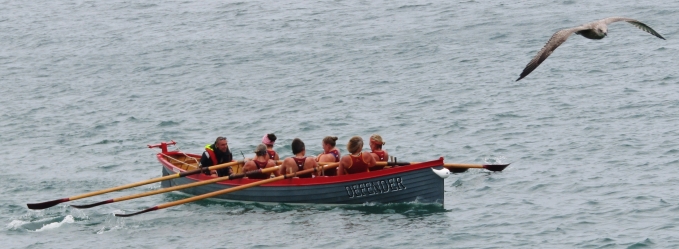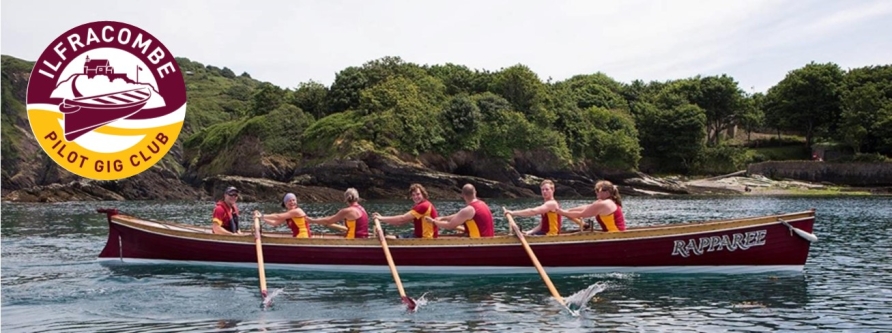
What is Cornish Pilot Gig rowing?
Pilot gigs are wooden rowing boats powered by six rowers guided by a coxswain. The boats are 32 feet long and almost 5 feet wide at their widest point. All modern racing pilot gigs are replicas of pilot gigs which were widely used on the South West coasts of England centuries ago.
The orginal pilot gigs were used to ferry pilots out to merchant vessels as they approached to do their trading. The gig boats were fast and manoeuvrable which meant that they had a good chance of getting to the merchant ships first and so winning the job of guiding the ship into the harbour.
The fast shape of the boats also meant that they were used as early lifeboats. Here in Ilfracombe, records show that the first dedicated lifeboat in 1828 was a pilot gig.

The advent of modern shipping meant that pilot gigs fell out of favour, and all but disappeared. However, in 1921 a group of Newquay rowers, recently returned from the First World War, decided to race the gig boats that remained.
After a hiatus caused by the Second World War, Newquay began racing its gigs again in 1947. By 1986, just forty years later, gig racing was popular enough to warrant its own governing body. This is when the CPGA was formed and the blueprints for all modern gigs were set down.
Now, there are approximately 80+ clubs with some 8,000 gig rowers, racing more than 160 gigs all around the coast of South West England. There are other clubs as far afield as the Netherlands, Ireland, and the USA.
The gig rowing season gets into full swing with the World Championships held over the May bank holiday on the Isles of Scilly, and culminates in the National Championships held in Newquay each September. The World Championships see almost all of the gigs racing in a single race; the lagoon between St Agnes and St Mary’s practically boils as gigs battle for position to gain advantage in the heats that take place later in the day, and the next.



